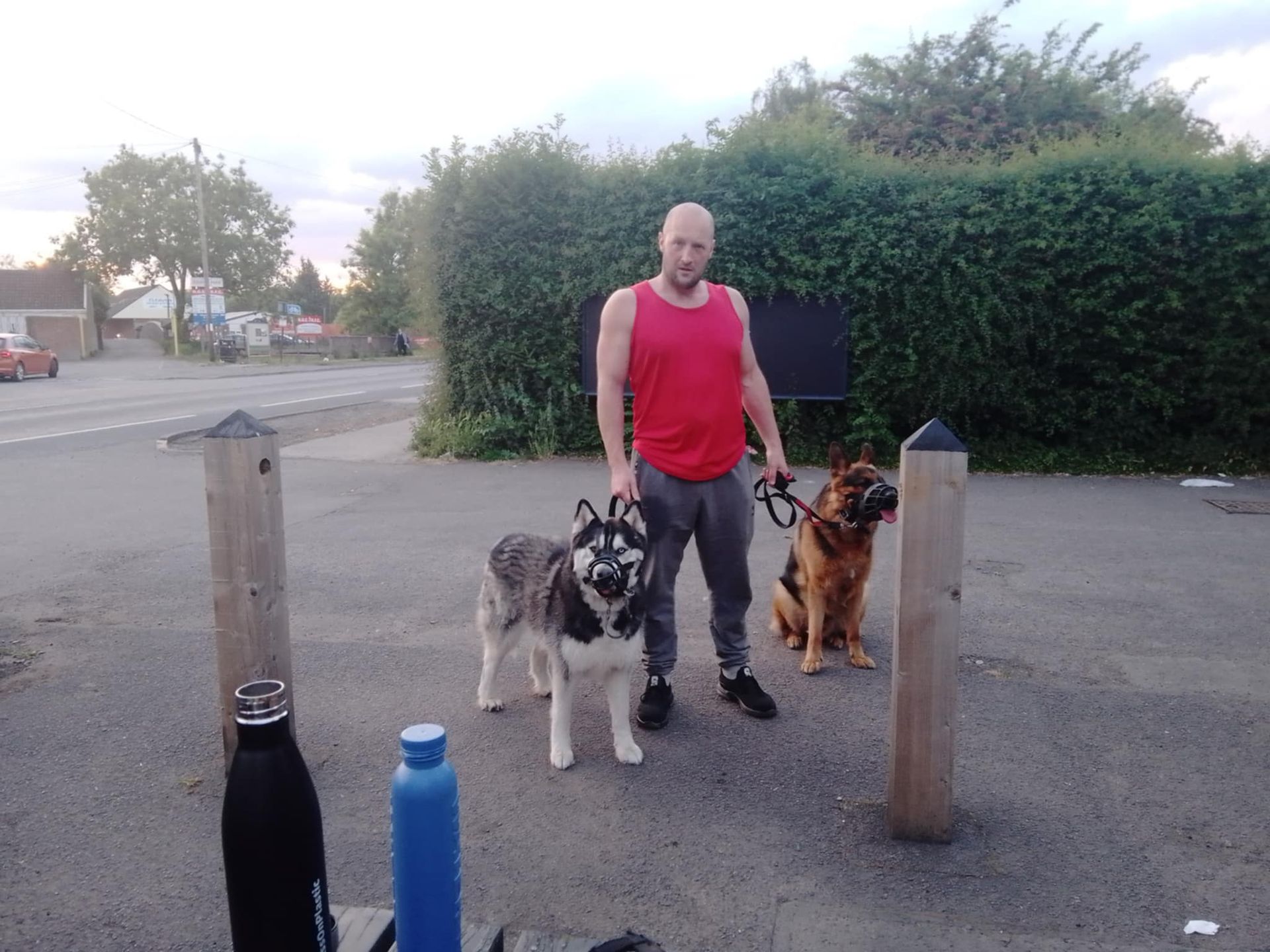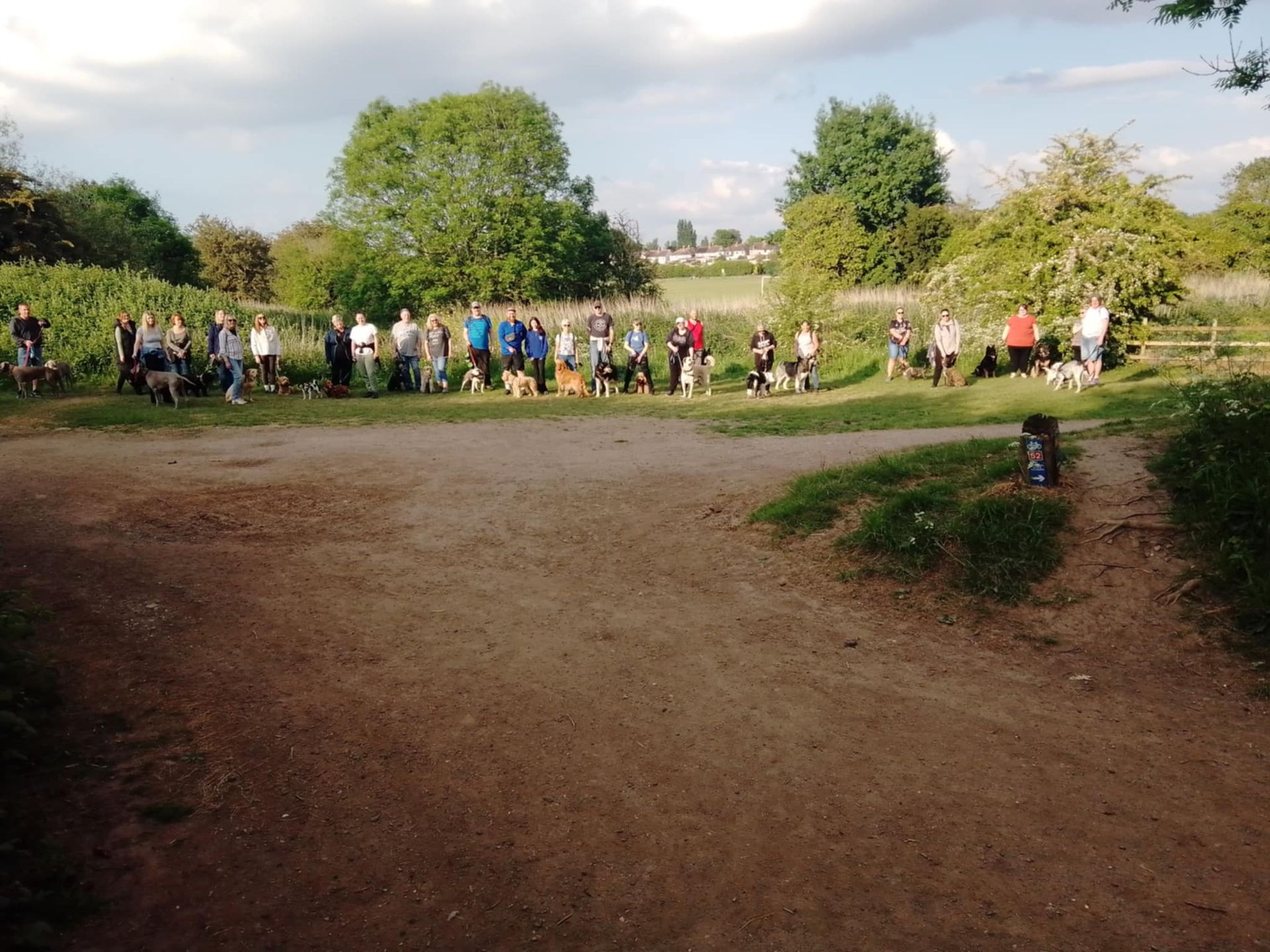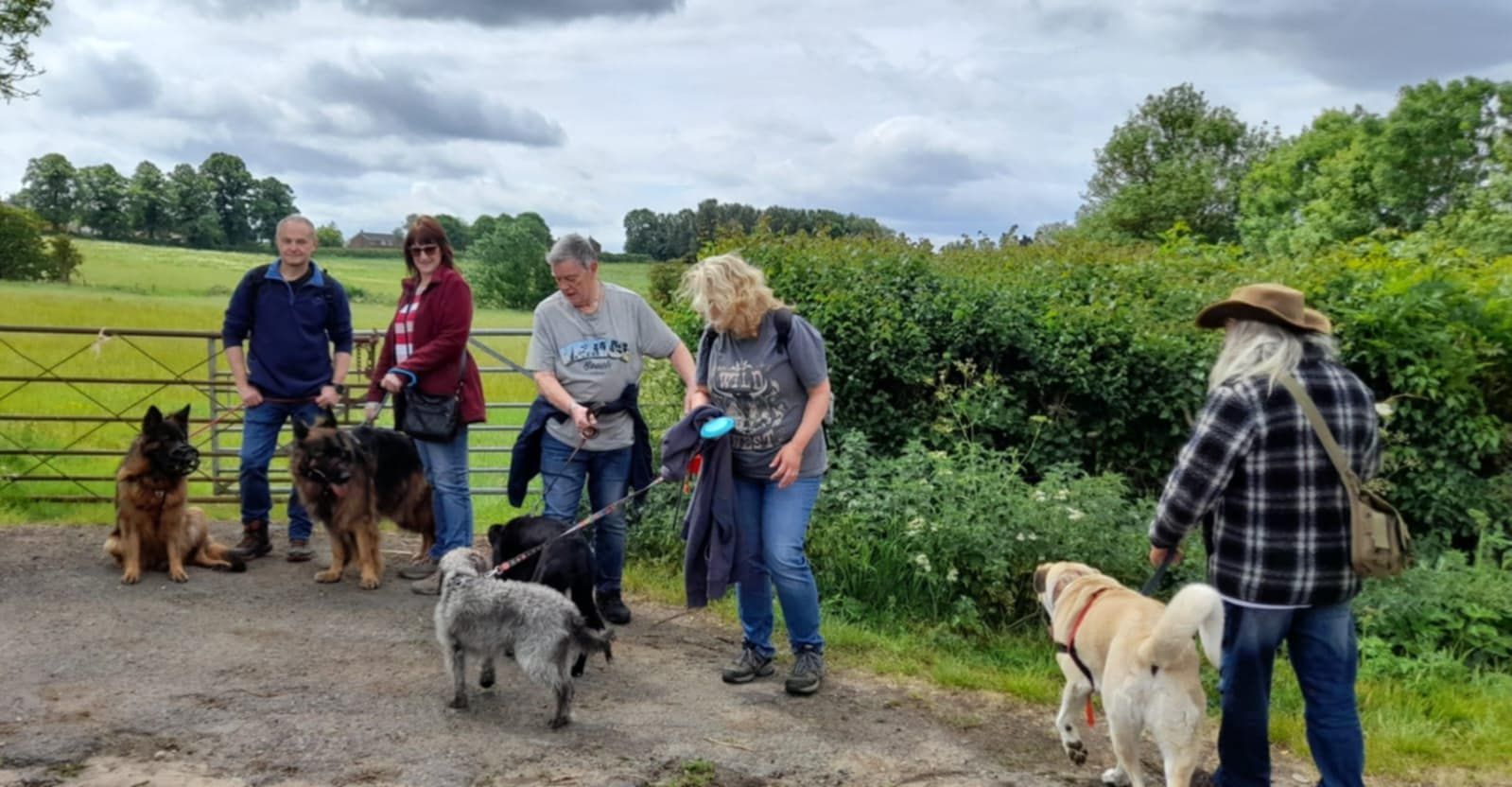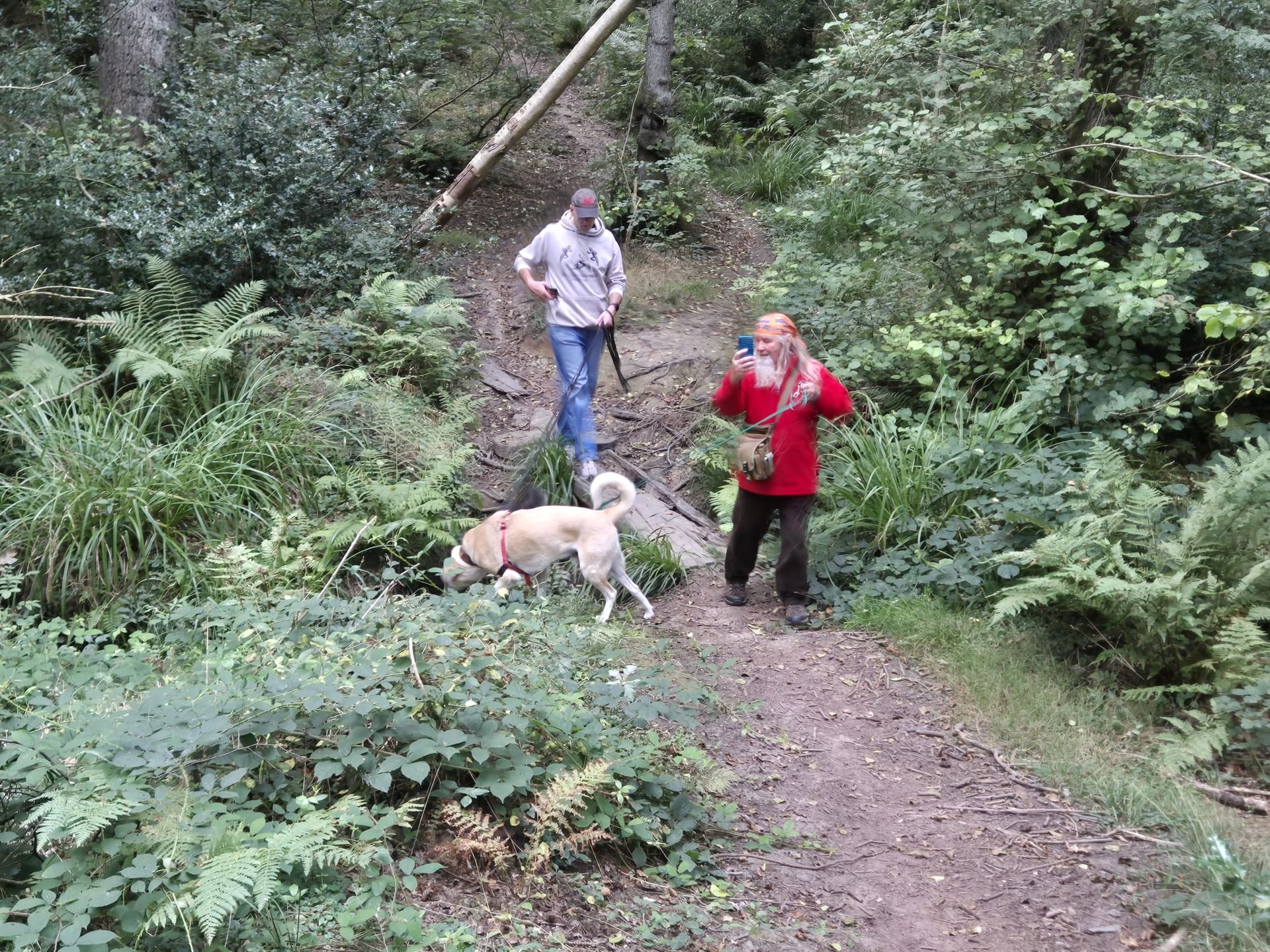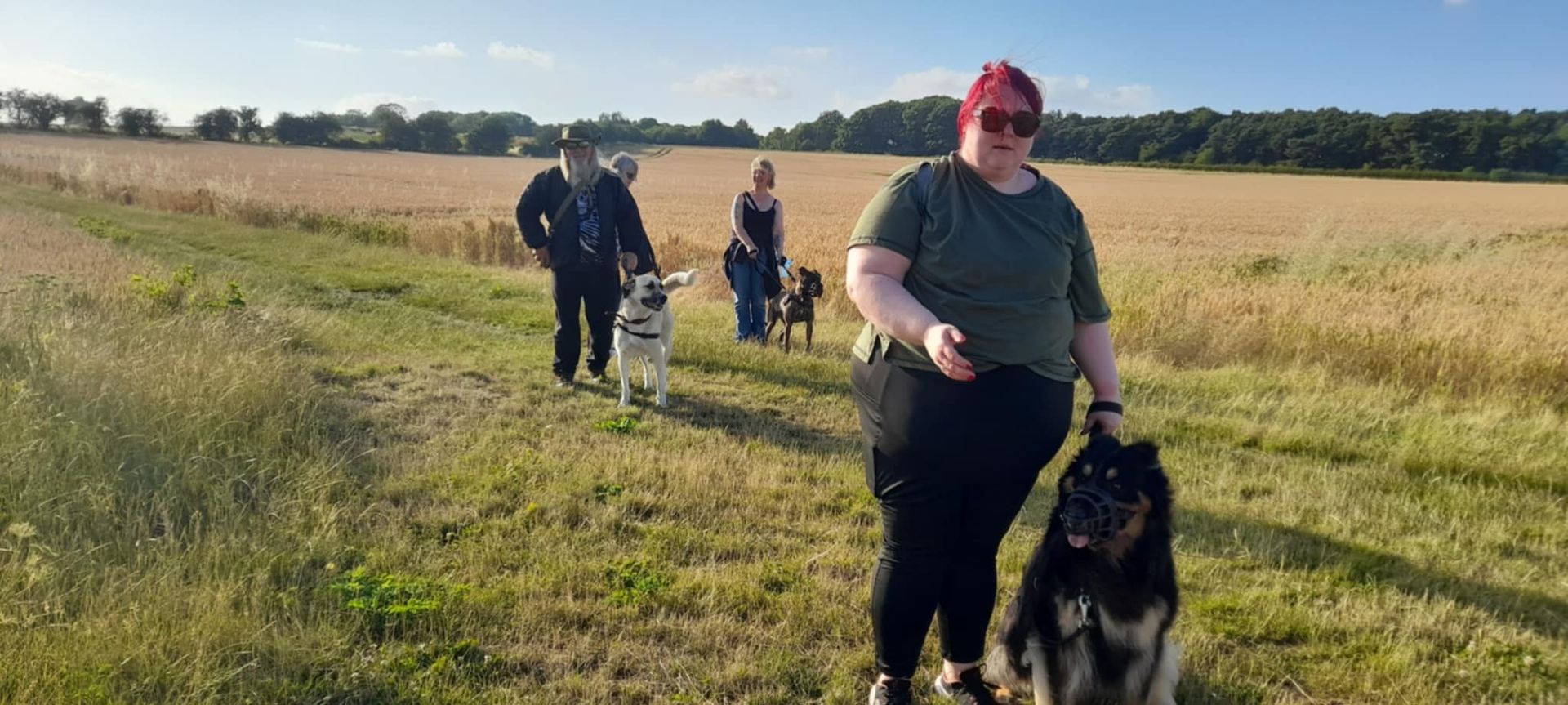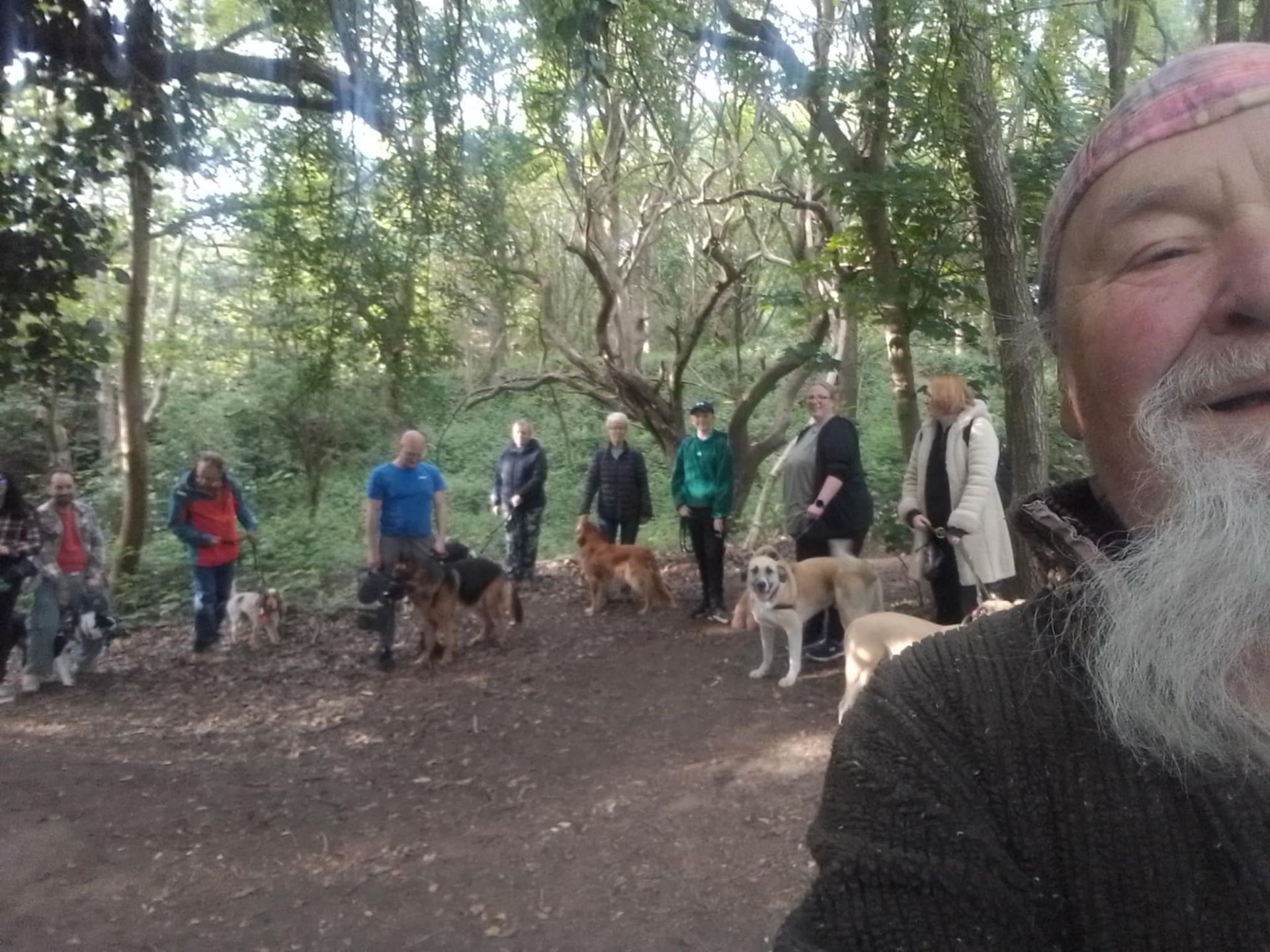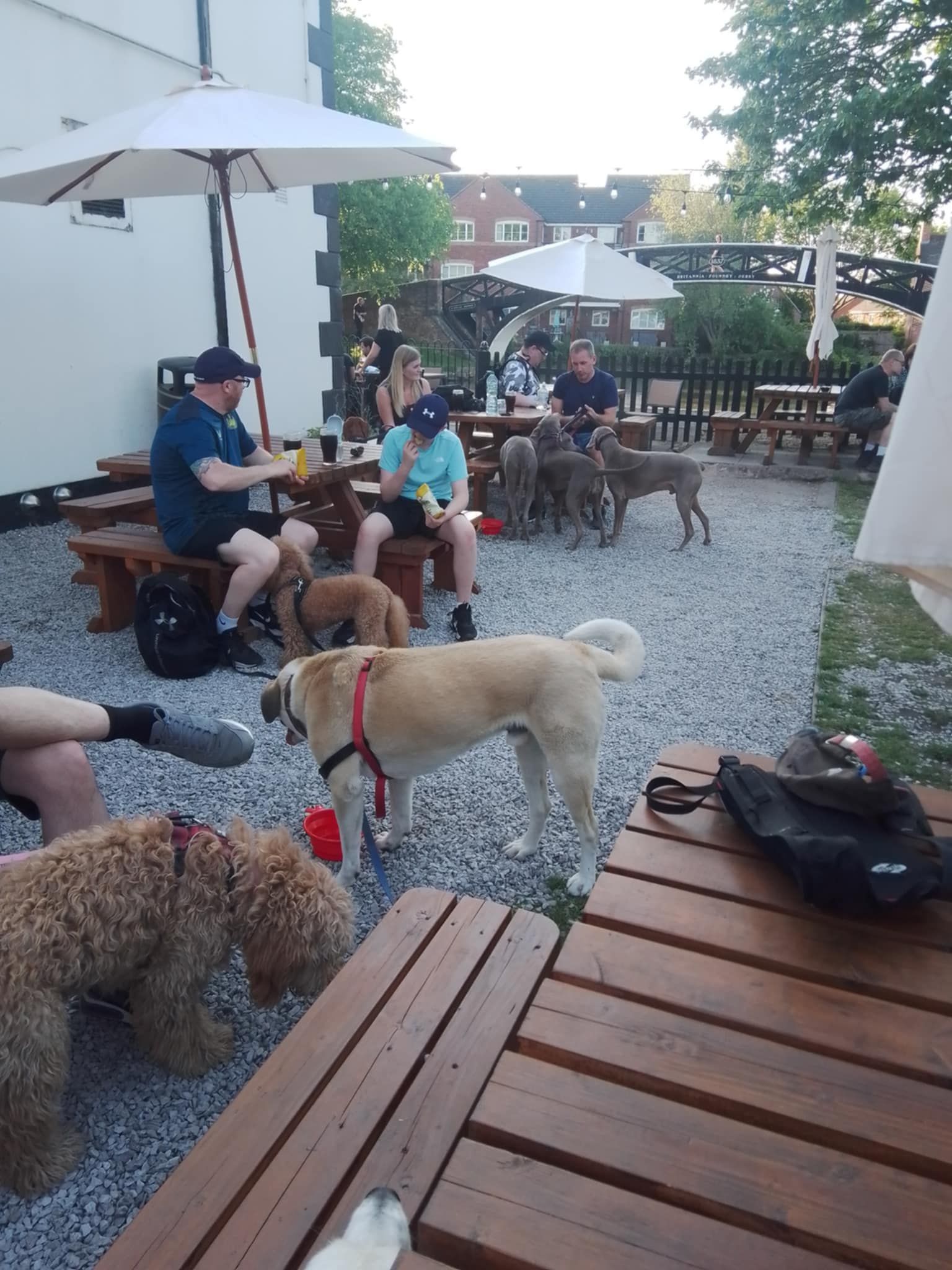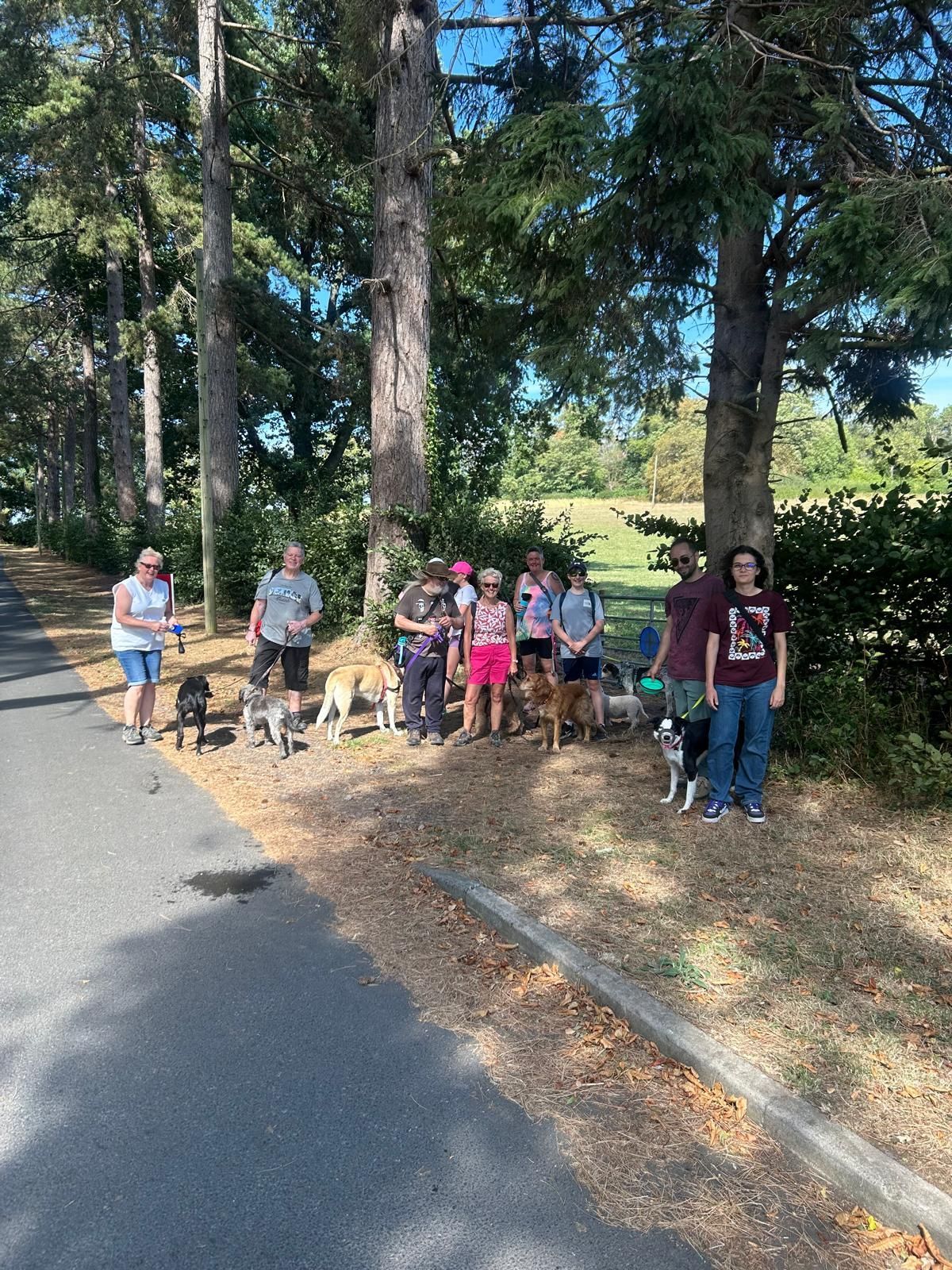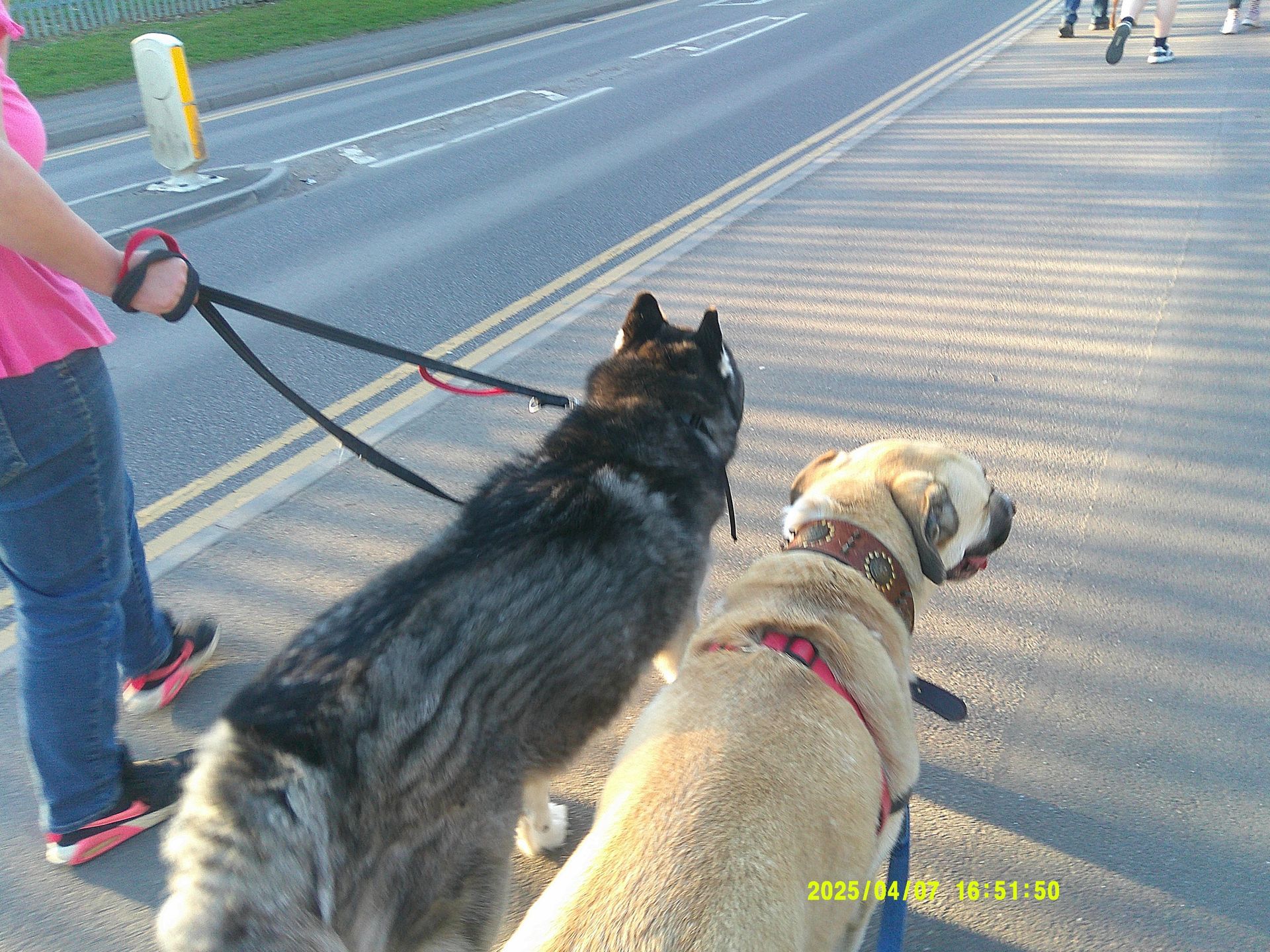Socialisation Walks.
For members that train on a regular basis.
A pack walk is not just a group of dogs being led on a structured walk. Pack walks offer so much more than a means of physical exercise. They combine walking, dog psychology, and training. By keeping dogs moving in one cohesive group, we stimulate their minds, providing them with not only a great physical workout, but a psychological workout as well. Not to mention that a pack walk combines two of a dog’s favourite things: walking and other dogs! They bond as they walk unified in a group and together they become pack mates.
Pack walks hold many benefits for dogs in addition to challenging the body and mind. While on a group dog walk, a dog’s instinctual need to travel together is fulfilled. They can enjoy walking alongside each other and being exposed to different types of behaviour. For reactive dogs, the pack encourages a calm demeanor and provides them with a positive experience with both dogs and people. For nervous dogs, the pack offers a welcoming space to walk with comrades and help them to improve their social skills.
Pack walking helps a dog focus on practicing calm energy and cooperating with one another. Not only do these pack walks benefit the dogs; they benefit their owners as well.
Dogs have a strong instinctual need to socialise with and explore the world. As we know, many dogs are reactive to other dogs, but these dogs still have a need to get out and socialise. Pack walks satisfy this need. Dogs can safely socialise without physically interacting. Even though the dogs are not physically touching each other, they can smell and see the other dogs, which is still considered socialisation.
Walking your dog is so important for training, and it’s something most owners do not do enough. Fenced yards are great, but it’s not enough. Dogs need to explore and get out in the world. Even a short walk easily satisfies this need.
Walking provides the dog with a lot of mental stimulation, which most dogs are lacking. Furthermore, mental stimulation will tire out a dog a lot faster than physical stimulation (e.g. running in the back yard)

